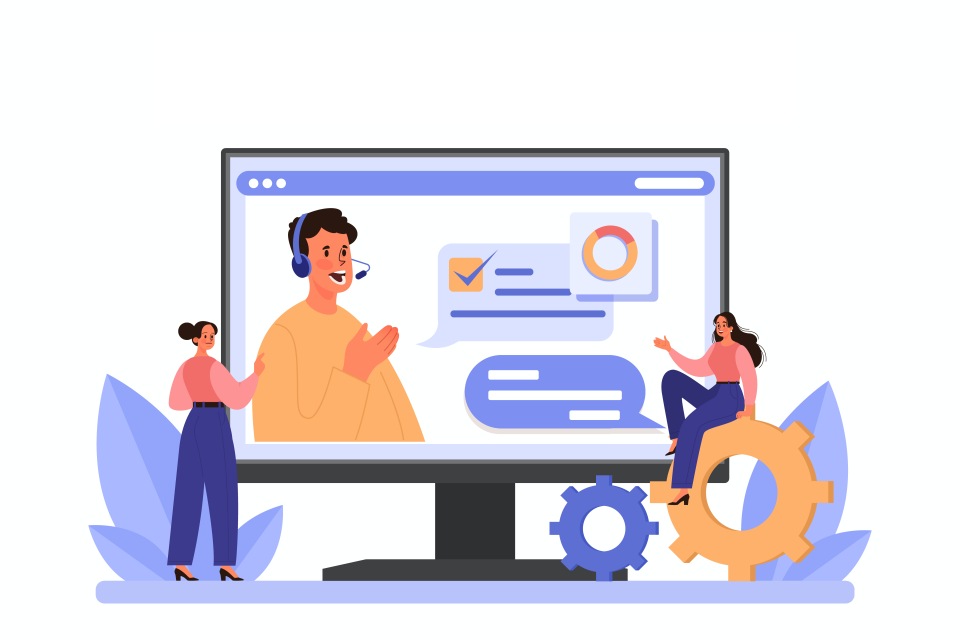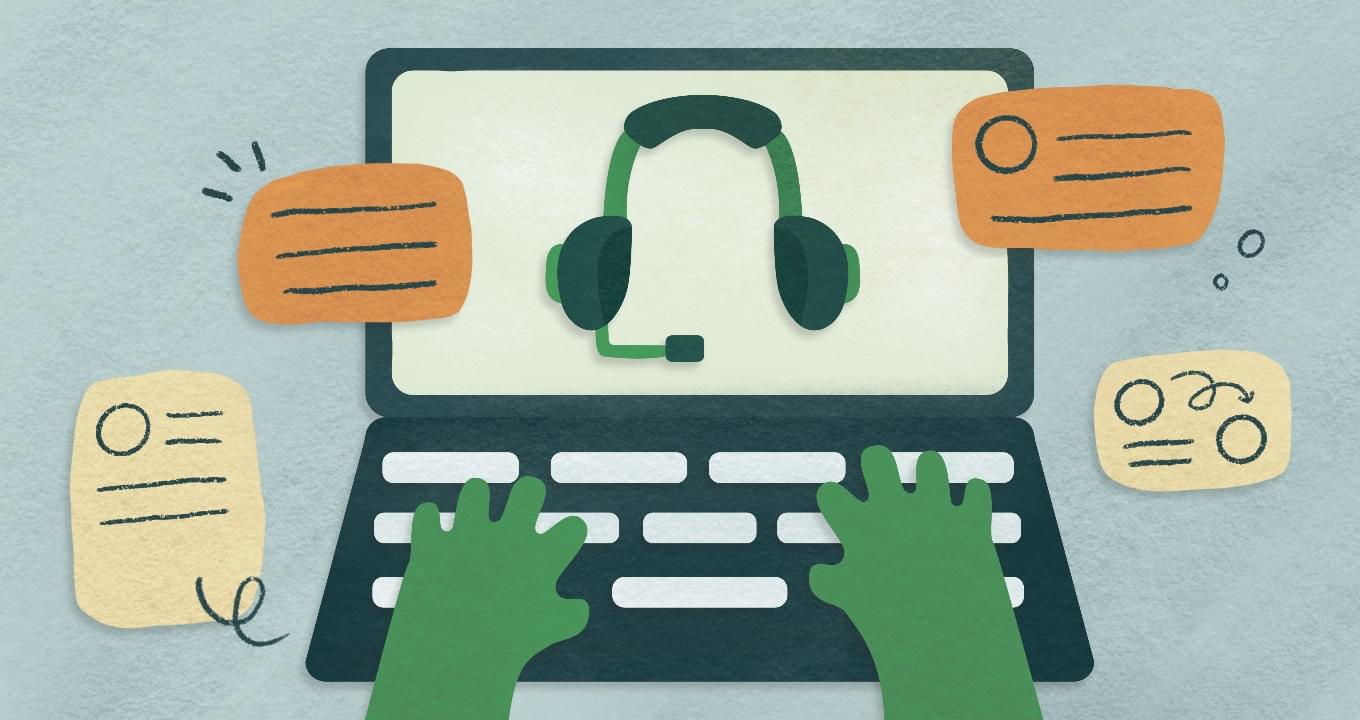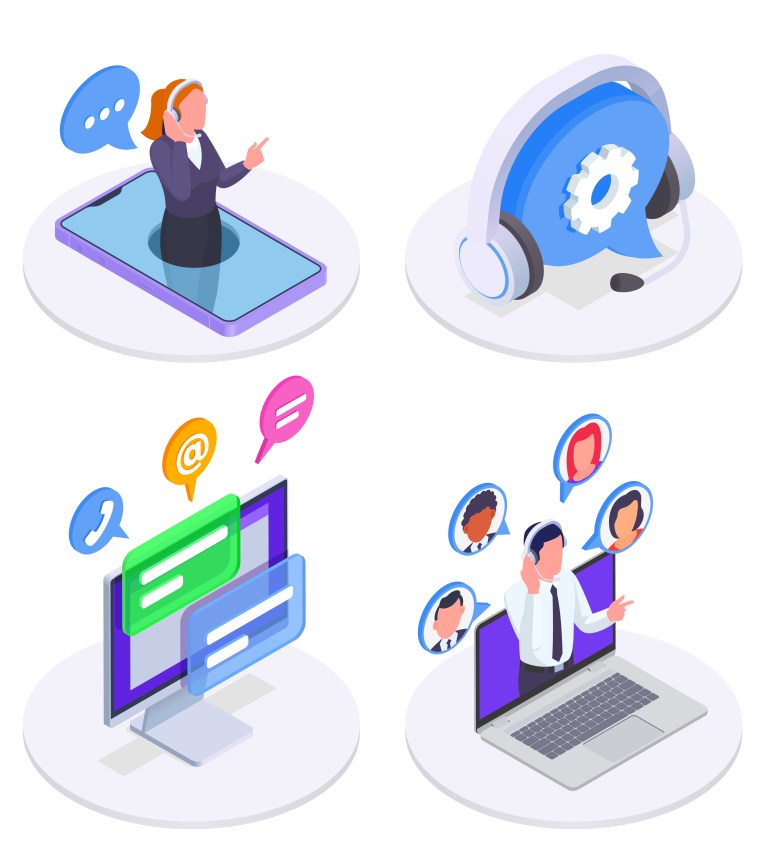Hello!
 The success of any business is largely dependent on its ability to provide customers with quality products and services. Customer support drives customer satisfaction, loyalty, and repeat business.
The success of any business is largely dependent on its ability to provide customers with quality products and services. Customer support drives customer satisfaction, loyalty, and repeat business.
One of the biggest challenges for any growing business is providing a consistently great customer experience while managing other critical operations. By leveraging the power of optimizing internal workflows, your business can quickly and easily improve customer support and provide a better customer experience.
Defining The Importance of Customer Support in Your Business
While customer service may seem like a staple in most businesses, it’s often overlooked or undervalued. Yet, an excellent customer service experience is essential for any business to remain competitive in the marketplace. This is because customer service is the key to building strong relationships with your customers and encouraging loyalty.
 When you provide a great customer experience, it increases customer satisfaction, which leads to repeat business and referrals. It also strengthens trust in your brand and boosts your reputation in the industry. Additionally, providing quality customer support allows you to resolve any issues that arise and prevent customer dissatisfaction quickly.
When you provide a great customer experience, it increases customer satisfaction, which leads to repeat business and referrals. It also strengthens trust in your brand and boosts your reputation in the industry. Additionally, providing quality customer support allows you to resolve any issues that arise and prevent customer dissatisfaction quickly.
Strategies for Improving Customer Satisfaction
Customer satisfaction is a critical factor in any organization’s success. Keeping customers happy is essential to retaining them and building relationships with new ones. Here are some strategies that can help you improve customer satisfaction:
1. Invest in customer service training and resources
 Investing in the training and development of customer service staff is essential to ensuring they have the skills and knowledge to provide excellent customer service. This should include technical abilities and soft skills such as communication, problem-solving, and empathy. Training should also focus on specific customer feedback issues or challenges, so employees can stay up-to-date on how best to serve their customers’ needs. In addition, investing in the right resources (such as instructional videos, tools, and processes) can help streamline support efforts.
Investing in the training and development of customer service staff is essential to ensuring they have the skills and knowledge to provide excellent customer service. This should include technical abilities and soft skills such as communication, problem-solving, and empathy. Training should also focus on specific customer feedback issues or challenges, so employees can stay up-to-date on how best to serve their customers’ needs. In addition, investing in the right resources (such as instructional videos, tools, and processes) can help streamline support efforts.
This can be led by having a companywide investment in understanding your core customers’ specific needs. For instance, when serving our academic transcription clients, this industry more so than others needs strict verbatim transcriptions.
So when our representatives work with incoming calls from our academic customers, they know that verbatim transcripts are a huge priority for them.
2. Use feedback loops to collect customer insights
Customer feedback can provide valuable information on how your customers view your products and services and their needs. This insight can help you make improvements that exceed their expectations and ensure customers have a positive experience with your business. There are numerous ways to collect this kind of feedback, including surveys, polls, emails, phone interviews, and focus groups, so it’s important to find the best method for your organization.
3. Get creative with communication channels
 Building relationships with customers requires more than just traditional methods of communication, such as phone or email.
Building relationships with customers requires more than just traditional methods of communication, such as phone or email.
Those methods may be convenient but won’t necessarily create an engaging experience for your customers.
Get creative with new channels, like live chat or social media messaging options, where possible, allowing you to engage directly with people while ensuring professional responses.
4. Make sure your team is fully involved in providing great customer service
Your team should be focused on delivering exceptional service that exceeds expectations at all times, not just when it’s convenient or necessary for the company’s bottom line. Make sure each team member understands the importance of delivering excellent customer service every time they interact with a client or potential client by emphasizing education initiatives (such as workshops), regular performance reviews, and rewarding exemplary services rendered by employees or agents when appropriate.
All these steps contribute towards meeting high standards of customer care across the board.
Maintaining High Standards of Quality Customer Support
 Customer support is essential for any business’s success. It is crucial to provide customers with a smooth and reliable experience when interacting with your company. Here are some strategies for maintaining high standards of quality customer support:
Customer support is essential for any business’s success. It is crucial to provide customers with a smooth and reliable experience when interacting with your company. Here are some strategies for maintaining high standards of quality customer support:
Monitor Customer Experience Metrics
To ensure that you provide the highest level of customer service, it is important to monitor customer experience metrics. This can include tracking response times, customer satisfaction ratings, and issue resolution rates. By keeping an eye on these key indicators, you can identify areas where improvement is needed and adjust accordingly.
Develop an “Always On” Strategy for Responding to Customers Promptly and Effectively
Customers expect prompt responses when they reach out to your team with a problem or question. An effective strategy for handling customer inquiries is to have an “always on” approach, meaning that customers should get a response from you within a reasonable amount of time, no matter what day or time it is. Developing efficient processes for handling customer inquiries can help you achieve this goal.
Implement Customer Service Policies That Are Simple and Easy to Understand
 When developing customer service policies, simplicity should be the goal. Clear communication and straightforward policies help customers understand how their issues will be addressed quickly and efficiently. Any ambiguities in your policies can lead to confusion or delays in resolving the issue, so make sure everything is clear and precise to maintain quality support standards.
When developing customer service policies, simplicity should be the goal. Clear communication and straightforward policies help customers understand how their issues will be addressed quickly and efficiently. Any ambiguities in your policies can lead to confusion or delays in resolving the issue, so make sure everything is clear and precise to maintain quality support standards.
Create A Helpful Knowledge Base and FAQ Section on Your Website or App
Having detailed answers to common questions not only helps reduce the workload of your support staff but also provides customers with instant access to answers without having to wait for a response from your team. A question we get often from our legal & law firm clients is if our transcribers will certify their transcripts. The answer is yes, and by including that in our FAQ it has helped decrease the amount of quick 2 minute phone calls of clients asking us this.
Providing easy-to-understand explanations makes it simpler and faster for customers to find solutions independently, making them more likely to stay satisfied with your service in the long run.
Integrating Technology into Your Customer Service Processes
 Customer service processes can be improved and streamlined through modern technologies, such as automation and data analysis. The integration of technology offers a wide range of benefits to customer service departments.
Customer service processes can be improved and streamlined through modern technologies, such as automation and data analysis. The integration of technology offers a wide range of benefits to customer service departments.
For example, automation can significantly reduce time spent on mundane, repeatable tasks. This allows customer service representatives to focus more on engaging with customers and addressing their needs. Automation also ensures that tasks are completed quickly and accurately, minimizing errors that could lead to unhappy customers.
Data analysis is another crucial tool for improving customer service processes. When customer service teams have access to data about customer journeys and behaviors, they can gain valuable insights into how best to engage with customers. This allows teams to act proactively rather than reactively when resolving customer issues.
 By leveraging the power of technology, companies can create more efficient and effective customer service processes that improve the quality of services delivered and overall customer satisfaction. With the right tools, businesses can ensure that their customers receive the best experience every time they interact with them while also ensuring they meet strict service and compliance standards in the industry they support.
By leveraging the power of technology, companies can create more efficient and effective customer service processes that improve the quality of services delivered and overall customer satisfaction. With the right tools, businesses can ensure that their customers receive the best experience every time they interact with them while also ensuring they meet strict service and compliance standards in the industry they support.
Maximizing Efficiency by Optimizing Internal Workflows
Running a successful business requires efficiency at every level. However, many companies struggle to get the most out of their internal processes while providing quality customer service. Below, we’ll address how you can optimize your internal workflows to maximize efficiency and ensure your customers are taken care of.
Identify areas for improvement
The first step to optimizing internal workflows is identifying which areas need improvement. One way this occurred for us is when law enforcement clients became increasingly concerned about data security and expressed their need for their vendors to be CJIS compliant. This is something our teams immediately recognized and ensured all our teams had a thorough understanding of.
Examine each organization’s process: customer service to sales to billing. Ask yourself if it is running as efficiently as possible or if there are issues causing areas to become bottlenecked or overly complicated. Once you have identified problem areas, you can start focusing on how to improve them.
Automate where possible
 Another way of improving efficiency is to look into automation options. Many tasks can be automated to speed up the workflow and take some burdens off employees. Automating mundane tasks allows employees to focus on more important tasks and ensures the workflow remains consistent and efficient. Use tools such as task automation software, and robotics process automation (RPA) platforms as needed throughout the workflow process, while keeping in mind this will not completely replace your human led customer support with automation.
Another way of improving efficiency is to look into automation options. Many tasks can be automated to speed up the workflow and take some burdens off employees. Automating mundane tasks allows employees to focus on more important tasks and ensures the workflow remains consistent and efficient. Use tools such as task automation software, and robotics process automation (RPA) platforms as needed throughout the workflow process, while keeping in mind this will not completely replace your human led customer support with automation.
Improve communication between teams
Improving communication between teams is key when it comes to optimizing internal workflows. Make sure each team understands what the other is working on and establish guidelines for collaboration that everyone follows. This can help prevent confusion between departments and encourage collaboration between teams that may otherwise struggle with communication issues due to different processes or terminology used differently in different departments. The goal should always be clear and open communication across teams to complete tasks quickly and accurately with minimal friction.
Define process documentation
Finally, create process documentation that outlines how things should be done throughout your organization in an easily achievable form that everyone can understand and follow accordingly. This will ensure consistency among employees when completing tasks within their department and keep everyone on the same page when collaborating across teams for projects or tasks to get completed correctly within deadlines given by upper management or clients assigning projects themselves.
 By following these steps, you’ll be able to maximize efficiency while providing quality customer support services without compromising either goal. With a few small adjustments, you could see dramatic improvements in overall production levels while ensuring customer satisfaction remains a top priority throughout your departments and processes.
By following these steps, you’ll be able to maximize efficiency while providing quality customer support services without compromising either goal. With a few small adjustments, you could see dramatic improvements in overall production levels while ensuring customer satisfaction remains a top priority throughout your departments and processes.
Managing Negative Customer Feedback and Reviews
No one likes to hear negative feedback and reviews, but they are an unavoidable part of doing business. It’s essential to know how to manage customer complaints, address them in a timely manner, and even use them as an opportunity for growth.
1. Respond Quickly
When a customer leaves a negative review or comment online, it’s essential to respond quickly and professionally. Responding in a timely manner shows the customer that you are taking their complaint seriously and gives them assurance that it won’t be ignored.
2. Apologize & Acknowledge
 Always apologize for any negative experience they had with your organization and let them know that their feedback is appreciated. Even if you don’t agree with the customer’s opinion, acknowledging their thoughts will show that you are taking into consideration how they feel about your business or product.
Always apologize for any negative experience they had with your organization and let them know that their feedback is appreciated. Even if you don’t agree with the customer’s opinion, acknowledging their thoughts will show that you are taking into consideration how they feel about your business or product.
3. Look for Solutions
When responding to a negative review or comment, look for solutions instead of excuses. Avoid blaming customers or other external factors when possible and focus on finding ways to make up for the poor experience. If it’s necessary to look into other issues, be sure to let the customer know what steps you are taking and when they can expect a resolution.
4. Follow Up
 Finally, make sure to follow up with customers who leave negative feedback or reviews. It’s essential to ensure that any issues have been adequately addressed and that the customer feels satisfied with their experience.
Finally, make sure to follow up with customers who leave negative feedback or reviews. It’s essential to ensure that any issues have been adequately addressed and that the customer feels satisfied with their experience.
This will show them that you take their opinions seriously and are willing to go above and beyond in order to make things right.
Managing negative customer feedback and reviews is essential for any business looking to maintain a positive reputation. By following these steps, you can show customers that your organization takes all complaints seriously while also using any negative experiences as an opportunity for growth.
Also read:
- How to Create an Email Signature in 2025
- How To Keep Track of Your Business’s Valuable Assets?
- SEO for Manufacturing Companies
Boost Your Business Growth with Improved Customer Support
Customer support is integral to running a successful business. It is important to have the right tools in place so that customers are taken care of, and your internal processes run smoothly. By optimizing internal workflows, automating tasks where possible, improving communication between teams, and defining process documentation, you can maximize efficiency while providing quality customer service at all times.
Thank you!
Join us on social media!
See you!






